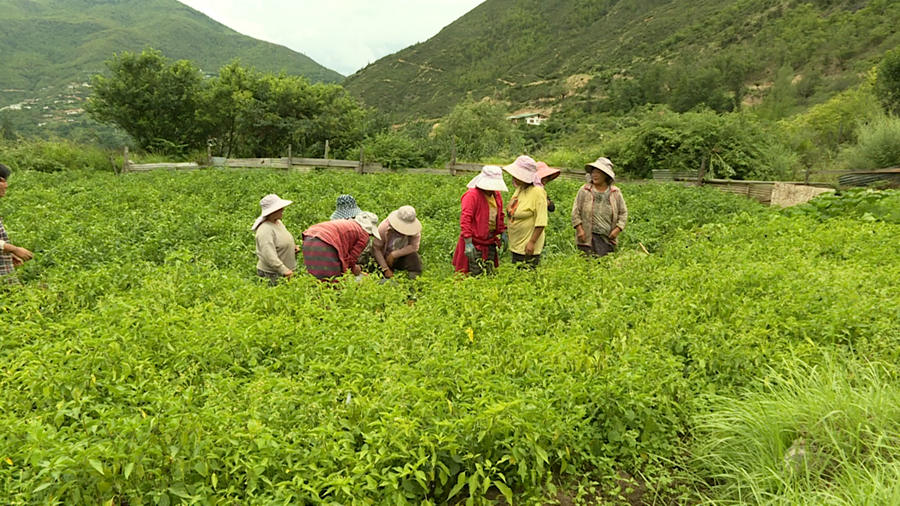
The agriculture and livestock ministry has described the performance of the agriculture and livestock sectors last year as ‘satisfactory’. The National Statistics Bureau released the new Integrated Agriculture and Livestock Census report yesterday. While potato and fruit production increased, there was slight reduction in other crops. In livestock, egg production declined by about 15 per cent.
The ministry’s news release stated that despite production being affected by uncertain weather conditions, instances of chilli blight, fall armyworm invasion, wildlife attacks on crops, and unprecedented animal diseases such as African swine fever, bird flu and lumpy skin disease, the overall performance of the sector was reasonable.
In agriculture, paddy production dropped slightly with a total production of nearly 41,000 metric tonnes. This, according to the ministry represents a drop of 0.6 per cent. The ministry attributes the decline to the prevalence of dry spell and heat waves during the critical paddy-growing season. Pest and disease infestations further contributed to the decline. However, the ministry expects production to surge this year due to various interventions such as the construction of 35 irrigation schemes, land development works and the provision of chain-link fencing in the 2022-2023 financial year.
Maize production reduced by 3 per cent attributing the fall to reduction in the size of cultivated area and invasion of fall armyworm. Production of minor cereals such as quinoa, millet, buckwheat and barley fell by 10 to 20 per cent. However, wheat production has increased by 9 per cent.
Meanwhile, potato production saw an increase of 21 per cent mainly due to seed replacement interventions, provision of chain-link fencing and timely facilitation of agro chemicals. However, the production of most vegetables such as chilli, cauliflower, broccoli and asparagus declined. The ministry attributes the decline to easily available imported vegetables, climate change, human-wildlife conflict and labour shortage.
Fruits such as apple, mandarin, areca nut, kiwi and dragon fruit saw an increase in production which the ministry says can be attributed to the Million Fruit Tree Plantation Programme. However, cardamom production has been continuously declining over the past four years due to ageing plants and price fluctuation.
In the livestock sector, dairy products saw an increase in production especially butter which grew by 15 per cent. According to the ministry, this growth is due to breeding programmes, improved management practices, and enhanced nutrition and animal health services among others.
However, egg production experienced a drop of 15 per cent from more than 100 million eggs produced in 2022 to a little over 85 million last year. The drop is mainly because of transition in layer bird breeds and disease outbreak.
Meanwhile honey and meat production has increased. Selective breeding, better nutrition, improved management practices, and effective veterinary services and disease management have contributed to increased meat production.
Kipchu/Tshering Zam








